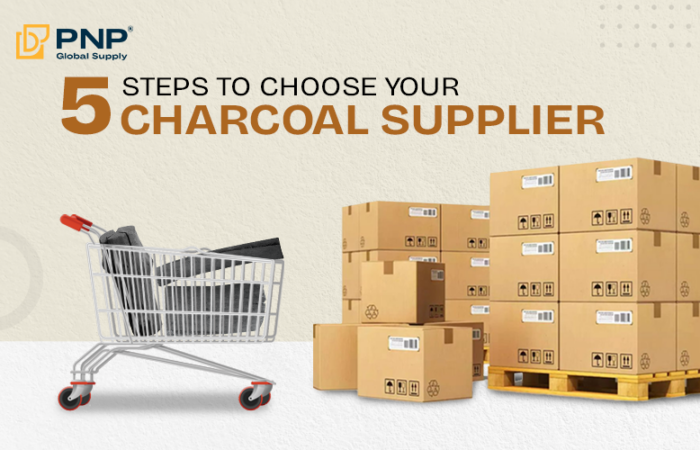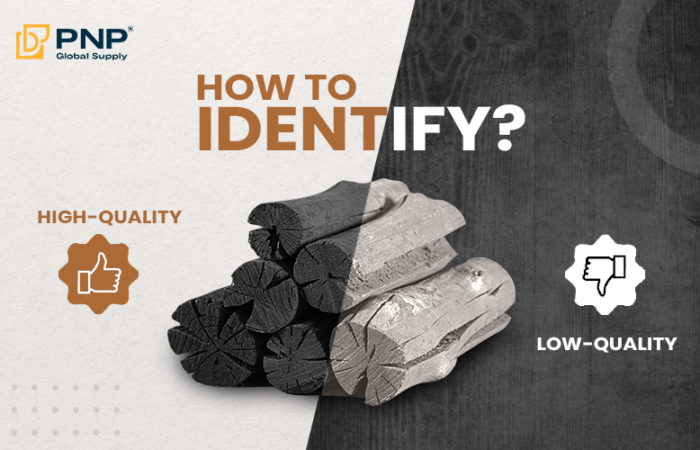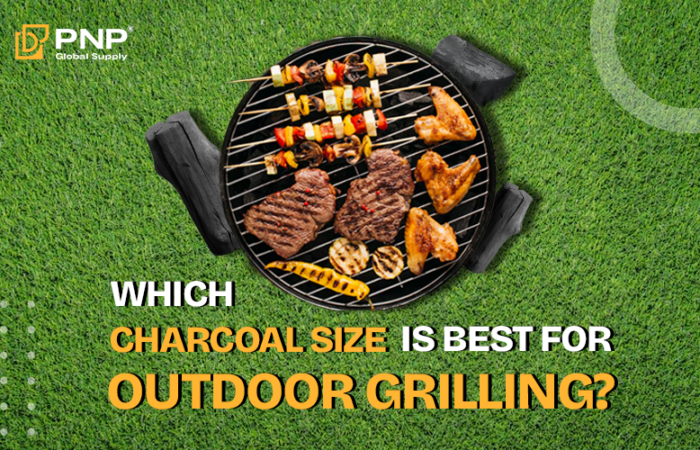Firewood and charcoal application remains essential despite modern alternative fuels. Though both come from wood, their properties differ. In this article, PNP Charcoal explores their burning characteristics to help you choose the best option.
The difference between firewood and charcoal?
Composition and production
- Firewood: Firewood is simply wood that has been cut and dried. Firewood log retains its natural structure, containing all the moisture, sap, and fibers found in raw wood. Raw wood is gone through a drying process to reduce about 20% moisture content.
- Charcoal: Charcoal composition is wood heated in a low-oxygen environment, a process called pyrolysis. This removes most of the water and other substances, leaving almost pure carbon. Charcoal has high carbon content and low moisture.
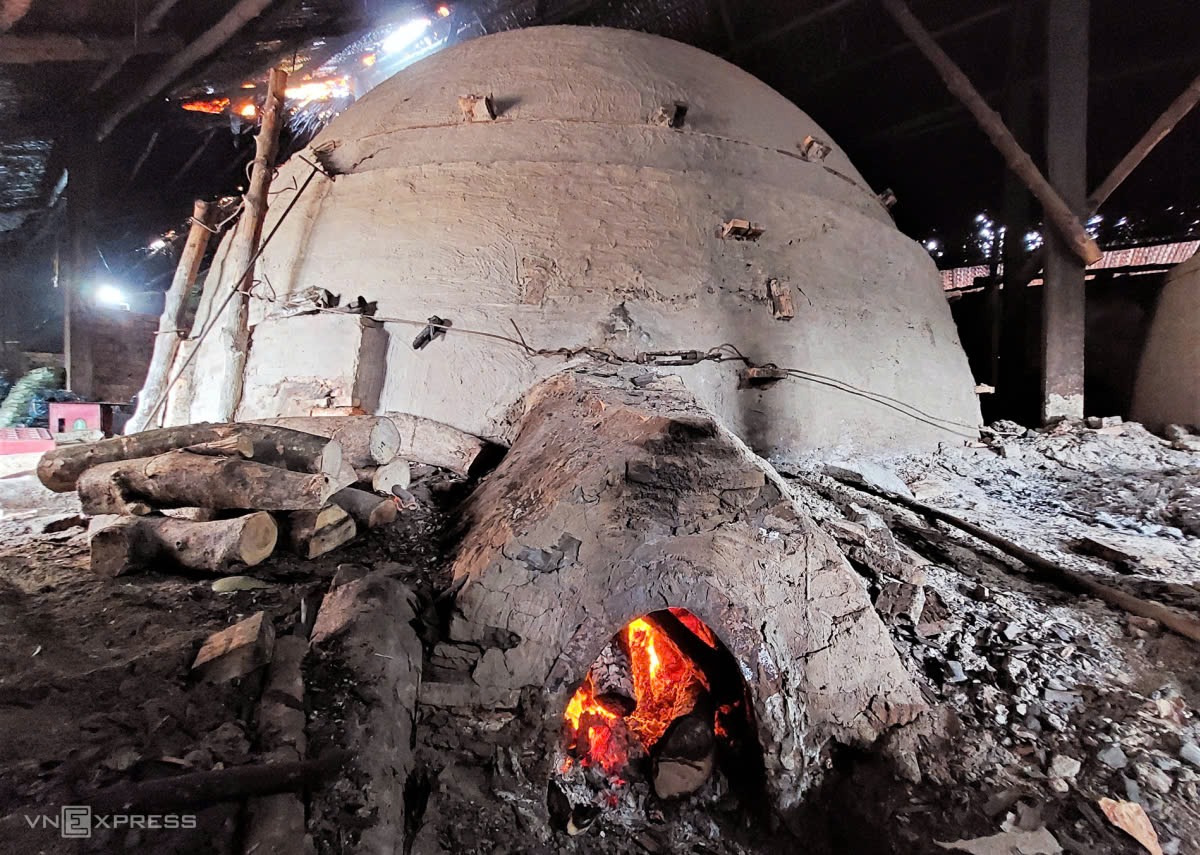
Burning efficiency and heat output
- Firewood: Firewood burns at a lower temperature and produces more smoke due to its higher moisture content. It ignites more slowly and burns less efficiently, creating more ash. However, firewood is ideal for providing long-lasting heat, making it suitable for home heating and campfires.
- Charcoal: Charcoal burns hotter and cleaner than firewood, producing very little smoke. Its higher energy density means it provides more heat per unit of weight, making it more efficient for tasks that require high temperatures, such as grilling or industrial uses. Carbon charcoal is also easier to light and maintains consistent heat for longer periods.
Firewood and charcoal application in daily lives
Firewood application
- Home heating: People use logs for centuries as a primary fuel source for heating homes. Wood stoves and fireplaces still rely heavily on seasoned fuelwood for warmth during cold months.
- Campfires and bonfires: Camp fire wood is the go-to choice for outdoor fires, whether for cooking or creating a warm, ambient atmosphere during camping or social gatherings. Its long-burning qualities make it ideal for keeping fires going for extended periods
- Cooking: Cooking with firewood imparts a unique flavor to food. In addition it can be a traditional and enjoyable experience.
- Power generation: In some regions, application for firewood is to generate electricity and heat. Burning wood produces steam that drives turbines.
Charcoal application
- Grilling and barbecuing: Bbq charcoal is the preferred fuel for charcoal grill application due to its high heat output and the distinct smoky flavor it imparts to food. Additionally, you can check out 6 Different Ways to Arrange Charcoal for Cooking to have delicious grilling
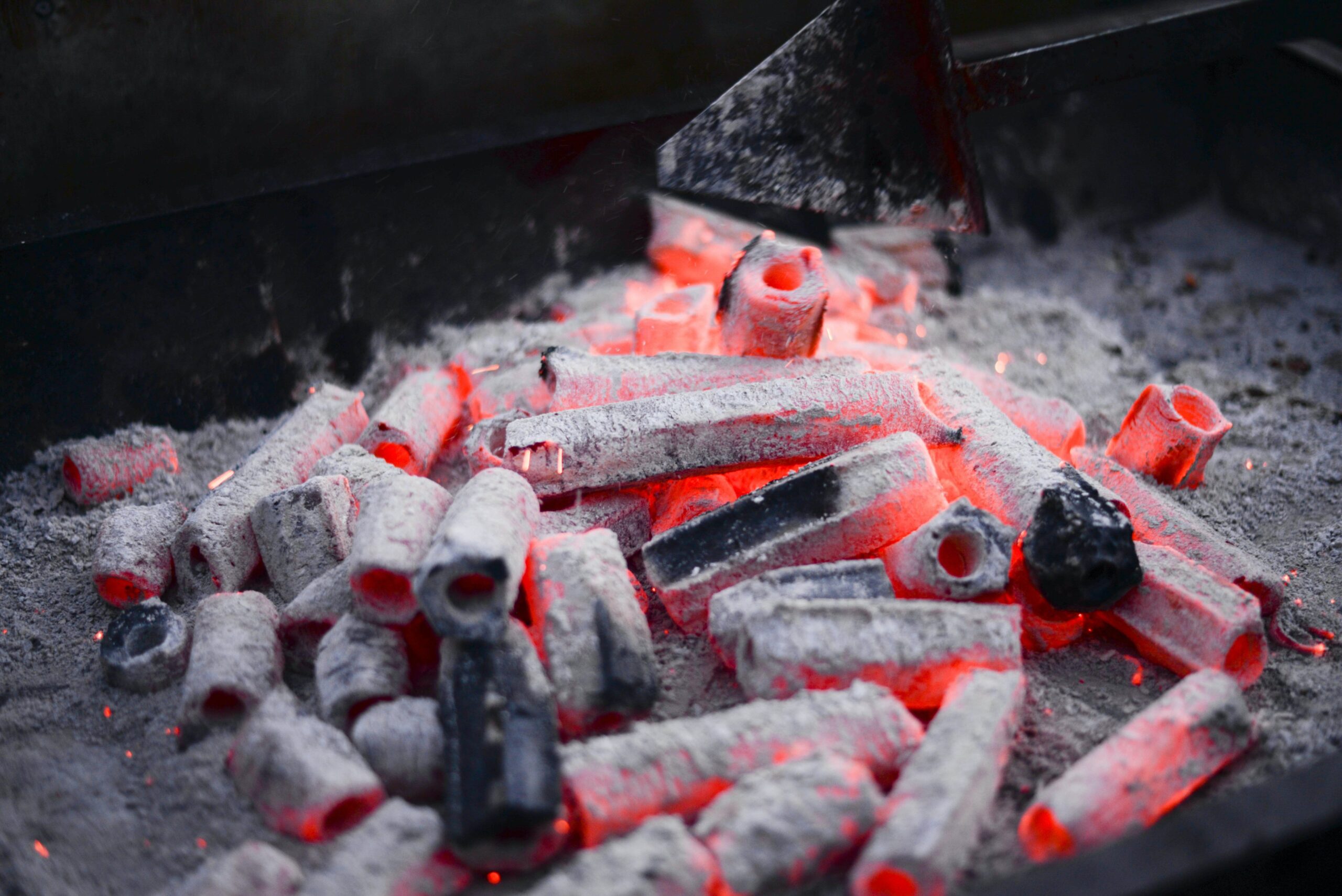
- Metalworking and blacksmithing: Charcoal’s high-temperature burn is perfect for metalworking applications. Blacksmiths have traditionally used carbon charcoal to heat metal to the necessary temperatures for shaping and forging.
What types of firewood and charcoal applications should you consider?
Firewood types
- Hardwood firewood: Dense and long-lasting, providing more heat over time. Common hardwoods include oak, hickory, maple, and ash.
- Softwood: lightweight, split easily, and burn faster. Although they are easier to ignite, they are less heat-efficient over long periods. Examples include pine, fir, and spruce.
Charcoal types
- Lump charcoal: Made by burning wood in the absence of air, it is natural and contains no additives or chemicals. It burns hotter and cleaner than briquettes but doesn’t last as long. Some popular lump charcoal as mangrove charcoal, kaya charcoal, and coffee charcoal.
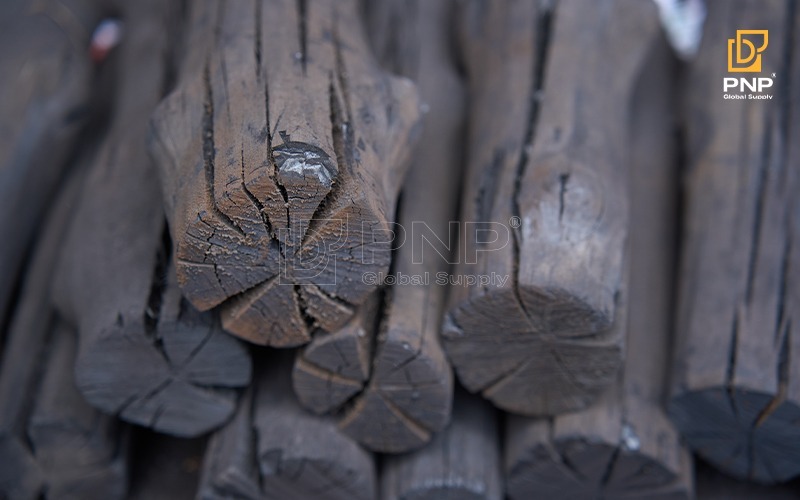
- Charcoal briquettes: Made from compressed wood by-products like sawdust, mixed with binders and additives to help them burn consistently. They burn at a consistent temperature and last longer than lump charcoal. However, they may produce more ash and less heat.
- Charcoal pellets: Compressed small pieces of carbonized wood, primarily used in pellet stoves and grills.
Conclusion about firewood and charcoal application
PNP Charcoal hopes that you can better understand the differences between firewood and charcoal applications, helping you choose the right fuel for your needs. Firewood is excellent for long-lasting fires and home heating, while carbon charcoal provides a hotter, more efficient burn for cooking. Follow PNP Charcoal for more valuable information and updates!
________________________________
Contact us for more information
Facebook: PNP Charcoal
Instagram: PNP Charcoal
Email: info@pnpglobalsupply.com

